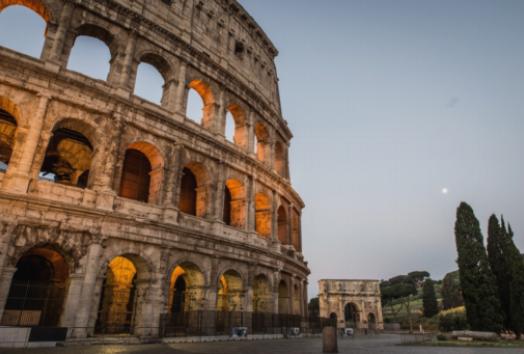Italy's rich artistic heritage is showcased in a myriad of captivating museums and galleries, each offering a unique perspective on the country's cultural legacy. One such institution that stands out as a beacon of modern artistic expression is the National Gallery of Modern Art in Rome. Established in 1883, this prestigious museum houses an unparalleled collection of Italian masterpieces, providing visitors with a window into the vibrant world of modern art. From awe-inspiring architectural wonders to groundbreaking works of art, the National Gallery of Modern Art offers a comprehensive overview of Italy's contribution to the evolution of contemporary art. Let us delve deeper into the history, significance, and treasures of this iconic institution.

The History and Significance of the National Gallery of Modern Art in Rome
The National Gallery of Modern Art in Rome, also known as Galleria Nazionale d'Arte Moderna (GNAM), holds a significant place in the world of art and culture. Established in 1883, it was originally housed in the Palazzo delle Esposizioni before being moved to its current location in the Valle Giulia in 19The museum was founded with the aim of showcasing and preserving Italy's rich artistic heritage, particularly focusing on modern and contemporary art.
Over the years, the National Gallery of Modern Art has amassed an impressive collection of Italian art, including works by renowned artists such as Giorgio de Chirico, Amedeo Modigliani, and Umberto Boccioni. These masterpieces not only represent the evolution of Italian art over the years but also serve as a reflection of the country's cultural identity and artistic prowess.
The museum's significance lies in its role as a window to the modern world, offering visitors a glimpse into Italy's artistic legacy and its influence on the global art scene. By showcasing a diverse range of artworks, the National Gallery of Modern Art in Rome has become a cultural hub that attracts art enthusiasts and tourists from around the world, contributing to the promotion and appreciation of modern and contemporary art.
Highlights of the Italian Collection at the National Gallery of Modern Art
One of the highlights of the National Gallery of Modern Art in Rome is its impressive collection of Italian artwork. From renowned Italian artists to up-and-coming talents, the gallery showcases a diverse range of styles and movements. Visitors can admire masterpieces from the likes of Giorgio de Chirico, Umberto Boccioni, and Amedeo Modigliani, as well as contemporary works by artists such as Alighiero Boetti and Francesco Clemente. The Italian collection at the National Gallery of Modern Art offers a comprehensive look at the rich artistic heritage of Italy, spanning from the early 20th century to the present day.
Architectural Marvels: A Look at the Building of the National Gallery of Modern Art
The National Gallery of Modern Art in Rome is a stunning architectural marvel that has become a symbol of Italy's dedication to showcasing the best of modern art. The building itself is a work of art, with its grand facade and intricate design drawing visitors in from around the world. The museum's spacious galleries and elegant interiors provide the perfect backdrop for the stunning works of art on display, creating an immersive and unforgettable experience for all who visit. The blending of classical and modern architectural styles in the building exemplifies Italy's rich artistic heritage and commitment to celebrating the beauty and innovation of modern art.
Italian Masters: Celebrating Modern Art at the National Gallery
From the bold colors and dynamic compositions of Futurism to the dreamlike landscapes of Surrealism, the Italian masters represented at the National Gallery demonstrate the evolution and innovation of artistic movements in the 20th century.
One of the most renowned Italian artists featured at the National Gallery is Giorgio de Chirico, a pioneer of the Surrealist movement. De Chirico's enigmatic and haunting paintings, such as "The Song of Love" and "The Disquieting Muses," challenge viewers to explore the depths of the subconscious and the mysteries of the human psyche. His use of sharp lines, stark contrasts, and symbolic imagery create a sense of unease and intrigue, inviting viewers to contemplate the hidden meanings behind his surreal compositions.
Another prominent figure in the Italian modern art scene is Giorgio Morandi, known for his intimate still-life paintings and sensitive use of light and shadow. Morandi's delicate brushwork and understated color palette imbue his compositions with a sense of tranquility and introspection, inviting viewers to slow down and appreciate the beauty of simple everyday objects. His ability to capture the essence of objects and imbue them with emotion and meaning has earned him a place among the most esteemed Italian masters of the 20th century.
The National Gallery of Modern Art also celebrates the work of Umberto Boccioni, a leading figure in the Futurist movement. Boccioni's dynamic and energetic paintings, such as "Unique Forms of Continuity in Space" and "Dynamism of a Cyclist," capture the speed and movement of modern life, exploring the intersection of art, technology, and society in the early 20th century. His innovative use of form, color, and perspective revolutionized the way artists approached representation and abstraction, paving the way for new possibilities in modern art.
Overall, the Italian masters featured at the National Gallery of Modern Art in Rome offer a compelling glimpse into the rich and diverse artistic heritage of Italy, showcasing the talent, creativity, and innovation of Italian artists in the modern era. Their bold experimentation, innovative techniques, and profound insights continue to captivate and inspire viewers, inviting them to explore the boundless possibilities of artistic expression in the modern world.
